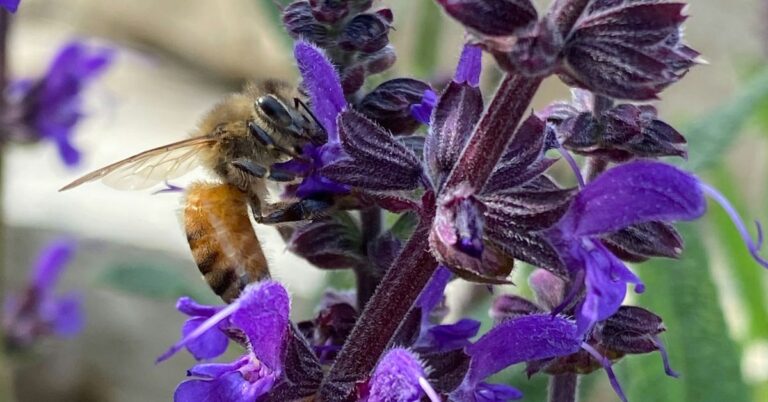Sustainable Sports: The Push for Eco-Friendly Practices in Major Leagues
Picture this: A sun-drenched afternoon, the smell of fresh-cut grass wafting through the air, and the sound of a ball hitting a bat echoes in the distance. It’s game day, and the excitement is palpable. But wait—what if I told you that beneath the thrilling spectacle of athleticism, there’s a growing movement advocating for a shift in how we think about sports? Yep, you guessed it: sustainable sports. The major leagues are starting to embrace eco-friendly practices, and it’s about time! (Honestly, I think it’s long overdue.)
The Green Team: Why Sustainability in Sports Matters
Now, you might be wondering, “Why should I care about sustainability in sports?” And that’s a fair question. I mean, isn’t the main goal just to enjoy the game? But let’s face it—sports have a significant environmental impact. From the carbon footprint of massive stadiums to the waste generated by fans, the numbers are staggering. According to a study from the Green Sports Alliance, the sports industry emits nearly 1.5 billion tons of carbon dioxide annually. (That’s a lot of hot air, and not just from players and coaches!)
So, it’s crucial for leagues to step up and take responsibility. Fans increasingly care about the planet, and they want to support teams that reflect their values. I remember once sitting in a packed stadium, sipping on a cold drink from a plastic cup, and it hit me—why the heck are we drowning in single-use plastics while cheering for our favorite teams? So, it’s clear: sustainability isn’t just a buzzword—it’s become a necessity.
Major Leagues Going Green
Now, let’s dive into how some of the big players in the sports world are making strides toward sustainability. You might be surprised to learn that many franchises are already doing their part. (And if you’re a die-hard fan of a particular team, this could make you even prouder.)
1. The NFL: A Play for the Planet
The National Football League (NFL) has made notable efforts to embrace eco-friendly practices. The league has been working with the Green Sports Alliance to implement sustainability initiatives at various stadiums. For instance, the Super Bowl is no longer just about the halftime show and the commercials. They’ve started focusing on reducing waste and promoting recycling. During Super Bowl LIII, they implemented a zero-waste program, which diverted over 90% of the waste generated at the event from landfills. (That’s a win for the planet and for football fans alike!)
2. MLB: Hitting Home Runs for Sustainability
Major League Baseball (MLB) is also stepping up to the plate. Teams like the San Francisco Giants have installed solar panels on their stadium roofs to generate clean energy. And let’s not forget about the Chicago Cubs, who have taken their commitment to sustainability seriously by implementing a comprehensive recycling program at Wrigley Field. I mean, what better way to enjoy a hot dog than knowing that you’re doing your part for the environment?
3. NBA: Dribbling Toward Sustainability
The National Basketball Association (NBA) has launched its own sustainability initiative, “NBA Green.” This program encourages teams to adopt eco-friendly practices, such as using LED lighting in arenas and promoting public transportation for fans attending games. They even planted over 2 million trees across the globe as part of their commitment to a greener planet. (Talk about slam dunking for sustainability!)
Fan Engagement: The Heart of Eco-Friendly Practices
But it’s not just the leagues making the moves; fans play a significant role in pushing for these changes. I’ve noticed that many people are more conscious of their consumption habits and are eager to support teams that align with their values. Social media has become a powerful tool for fans to voice their opinions, and leagues are starting to listen. (Isn’t it great when our voices are heard?)
For example, fans are now advocating for stadiums to minimize food waste. It’s become a trend to share your eco-friendly game day snacks on Instagram, and I can’t help but chuckle at the creativity that’s blossomed from this. No more greasy nachos wrapped in plastic—now it’s all about those homemade, organic snacks. (And hey, who doesn’t love a good charcuterie board while watching the game?)
The Challenges Ahead: A Bumpy Road to Sustainability
Of course, it’s not all sunshine and rainbows. There are challenges that leagues face in implementing sustainable practices. For one, the upfront costs can be daunting. Upgrading stadiums to be more energy efficient or implementing comprehensive recycling programs require significant investment. But honestly, I think it’s worth it in the long run. After all, who wouldn’t want a stadium that’s both state-of-the-art and environmentally friendly?
Another hurdle is changing the mindset of fans and teams alike. (And we all know how stubborn sports fans can be!) Some might see these changes as unnecessary or merely a marketing gimmick. But, the truth is, sustainable practices can enhance the fan experience. Imagine attending a game in a stadium that smells fresh and clean instead of the usual mix of popcorn and stale beer. Now, that’s a win-win!
Examples of Innovative Practices
Let’s take a moment to highlight some innovative practices being adopted across various sports. These examples might inspire other leagues to jump on the eco-friendly bandwagon.
1. Eco-Friendly Merchandise
Teams are starting to sell eco-friendly merchandise, from jerseys made of recycled materials to reusable water bottles. The Portland Trail Blazers, for example, partnered with a sustainable clothing brand to create a line of eco-conscious apparel. (I mean, who wouldn’t want to wear their team’s colors while also saving the planet?)
2. Transportation Initiatives
Some leagues are encouraging fans to use public transportation to attend games. The Seattle Seahawks, for instance, offer incentives for fans who carpool or take public transit. They even provide discounted tickets for those who can prove they’ve traveled sustainably. (A little nudge in the right direction goes a long way, right?)
3. Green Building Practices
New stadiums are being designed with sustainability in mind. For instance, the Chase Center in San Francisco is LEED certified, which means it meets strict environmental standards in terms of energy efficiency and resource conservation. It’s refreshing to see sports facilities being built with the environment in mind, rather than just a place to hold events.
How Can We Contribute?
So, what can we, as fans, do to support sustainable sports? There are a few simple steps we can take. First off, we can choose to support teams that prioritize eco-friendly practices. It’s our money, after all! When we buy tickets or merchandise from a team that cares about the planet, we’re sending a message that sustainability matters.
Second, we can be conscious of our behavior at games. Bring your own reusable cup, skip the plastic straws, and try to minimize waste. I mean, who needs a mountain of trash just to enjoy a game? And hey, if you’re feeling particularly passionate, you can even reach out to your favorite team and express your support for sustainable practices. (You never know how far your voice can go!)
The Future of Sustainable Sports
I can’t help but feel optimistic about the future of sustainable sports. As more leagues adopt eco-friendly practices, we’ll likely see a ripple effect across the entire industry. The more fans demand sustainability, the more teams will have no choice but to listen. And who knows? One day we might be watching a game in a completely zero-waste stadium, sipping on organic drinks while cheering on our favorite players. (Now that’s a vision worth working toward!)
Wrapping It Up
In conclusion, the push for sustainable sports is not just a passing trend; it’s a necessary evolution in how we engage with athletics. Major leagues are starting to embrace eco-friendly practices, and we, as fans, can do our part to support this movement. So, the next time you’re at a game, take a moment to appreciate not just the score but also the strides being made toward a greener future.
And who knows? Maybe one day we’ll all be reminiscing about the time we cheered for our favorite teams while also saving the planet, one game at a time. (How cool would that be?) Cheers to sustainable sports!









